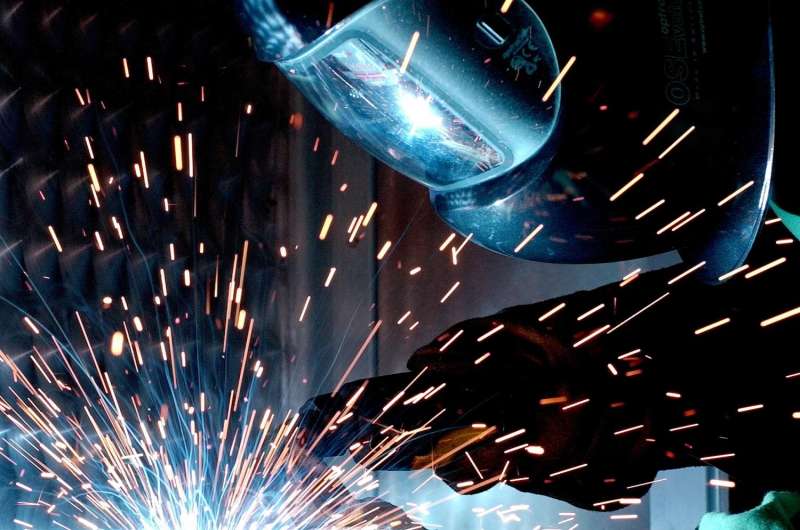June 17, 2025
The GIST Robots learn welding skills from humans to address welder shortage 
Lisa Lock
scientific editor

Andrew Zinin
lead editor
Editors' notes
This article has been reviewed according to Science X's editorial process and policies. Editors have highlighted the following attributes while ensuring the content's credibility:
fact-checked
trusted source
proofread

Robots could be the solution to filling the shortage of welders in the U.K., thanks to existing human expertise, a new study from the University of Nottingham has revealed.
The U.K.'s critical welder shortage threatens certain industries, from construction to aerospace, potentially impacting the economy and infrastructure. Declining vocational training and Brexit as it becomes more challenging to attract and retain skilled welders from the EU has further exacerbated this skills gap. According to Axiom Personnel, half of the nation's welders are due to retire by 2027.
In the new study, published in Robotics and Computer-Integrated Manufacturing, the authors asked whether robots could bridge this divide and if expert welder skills could be transferred to automated systems.
By developing a robotic welding system that learns from skilled welders, and building a skills library, the system could then tackle new, unseen welding tasks by intelligently combining learned skills, demonstrated successfully with both expert and novice welders.
In the proposed approach, proficient welders execute basic tasks, such as welding simple lines or arcs, while their actions are recorded using an operation tracking system. Then key welding parameters, such as torch traveling speed, welding arc length, welding angle, welding current, and wire feeding rate, are extracted and stored in a skill library.
Experiments have also been conducted to verify the system. A skilled welder was asked to weld linear and arc-shaped grooves on stainless steel workpieces, while the welder's skills were tracked, extracted, and stored digitally.
These skills were further used to plan the robotic welding system to execute new complex tasks, such as polynomial curves—curves with a lot of bends. Welding results from the robot show a quality that is on par with that of a skilled welder, effectively saving time and resources in the long term.
"Our aim is not to replace expert welders with robots. Instead, we seek to enable robots to conduct repetitive or hazardous tasks after learning skills from expert welders to increase the productivity, thereby allowing the experts to focus on more creative tasks. The proposed methodology in this research is expandable to other manual operations such as assembly, polishing. Hence it can benefit several industrial sectors," says Abdelkhalick Mohammad.
Robotic welding systems are pivotal in various manufacturing sectors, such as aerospace, construction, automotive, and maritime industries, due to their ability to operate in challenging environments with fewer physical constraints compared to human welders.
However, their lack of process knowledge and adaptability leads to a heavy reliance on experienced technicians for process planning. To reduce these challenges, this new robotic welding system is proposed, focusing on learning from manual operations.
More information: Junfu Zhou et al, Teaching robots to weld by leveraging human expertise, Robotics and Computer-Integrated Manufacturing (2025). DOI: 10.1016/j.rcim.2025.103027
Provided by University of Nottingham Citation: Robots learn welding skills from humans to address welder shortage (2025, June 17) retrieved 17 June 2025 from https://techxplore.com/news/2025-06-robots-weld-human-expertise-uk.html This document is subject to copyright. Apart from any fair dealing for the purpose of private study or research, no part may be reproduced without the written permission. The content is provided for information purposes only.
Explore further
Digital twin can protect physical systems and train new users 0 shares
Feedback to editors










